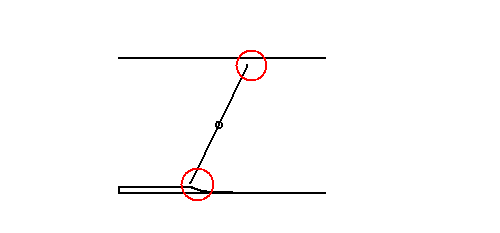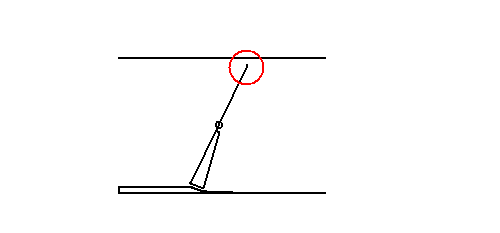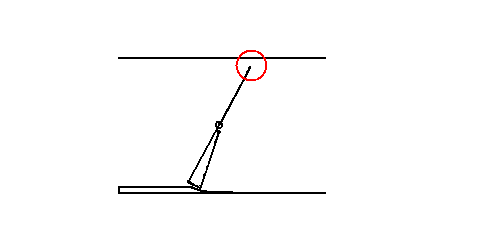I've in the past maintained that, for gasoline engines, intake losses are composed of pumping losses, of which intake manifold vacuum is the result; and throttling losses, which is the energy required to suck air past a very inefficient blockage. Most people have either implied or concluded that throttling losses are negligible compared to pumping losses. Others lump throttling losses right into pumping losses, and with reason: The throttle itself helps to cause intake manifold vacuum, right? How would one go about separating the two effects if they're intertwined? I've even lumped this in, on other threads of mine, so as to simplify explanations.
Well, now I'm going to ask: What if throttling losses are significant? What if they can be lowered? And I'm going to refer to these quick Paint drawings:

Here is a simplified representation of my throttle body. Causing air to be sucked past the two circled little openings at either end of the throttle plate will take a lot of energy. This energy is taken from the mechanical energy that the engine just got done developing. Since the openings are so small, the incoming air is going to be accelerated a great deal while inside the small openings. This airflow will have a high average velocity, and that will translate into a lot of turbulence immediately past the throttle plate.
Note the interesting little curve at the bottom, where the lower throttle plate edge is at. I suspect that Dodge put that there in order to aid in driveability, and to reduce throttling losses at slightly-open throttle conditions.
Now, to my proposal: Put a wedge on the lower throttle plate, like this:

Note that effectively, we've gone from two small openings to one small opening. The wedge blocks the lower throttle plate opening. Obviously, to get as much air into the engine as before, we would have to... open the throttle. Which leads to picture 3:

Note that the upper opening has widened a bit, and that the lower opening remains closed. There should be a bit less turbulence just past the throttle plate, since the wider top opening should allow the incoming air to have a lower average velocity, which will lessen the turbulence behind the throttle plate.
I am going to be testing this idea. I found a throttle plate with a wedge from a junked Volvo 850, and it happens to have the exact same minimum and maximum diameters as the throttle plate in my truck's throttle body. I've already adapted the Volvo plate to my truck's throttle body, and have taken the truck on an initial test run composed of about 85% city driving. Results are promising.